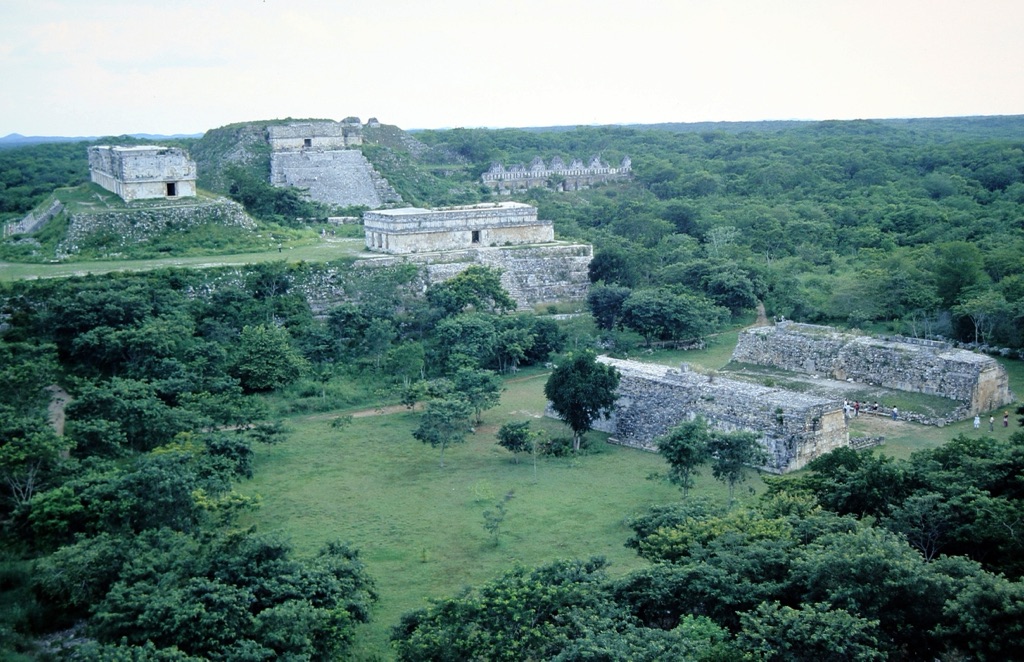Uxmal: A Testament to the Maya’s Architectural Genius
Uxmal, an ancient Maya city of the classical period, stands as a monumental testament to the architectural and cultural achievements of the Maya civilization. Located in present-day Mexico, specifically 62 km south of Mérida in the Yucatán state, Uxmal is recognized as one of the most significant archaeological sites of Maya culture. This recognition is shared with other notable sites such as Palenque, Chichen Itza, and Calakmul in Mexico, as well as Caracol and Xunantunich in Belize, and Tikal in Guatemala. The city’s architectural prowess and historical significance have earned it a designation as a UNESCO World Heritage Site.
Get your dose of History via Email
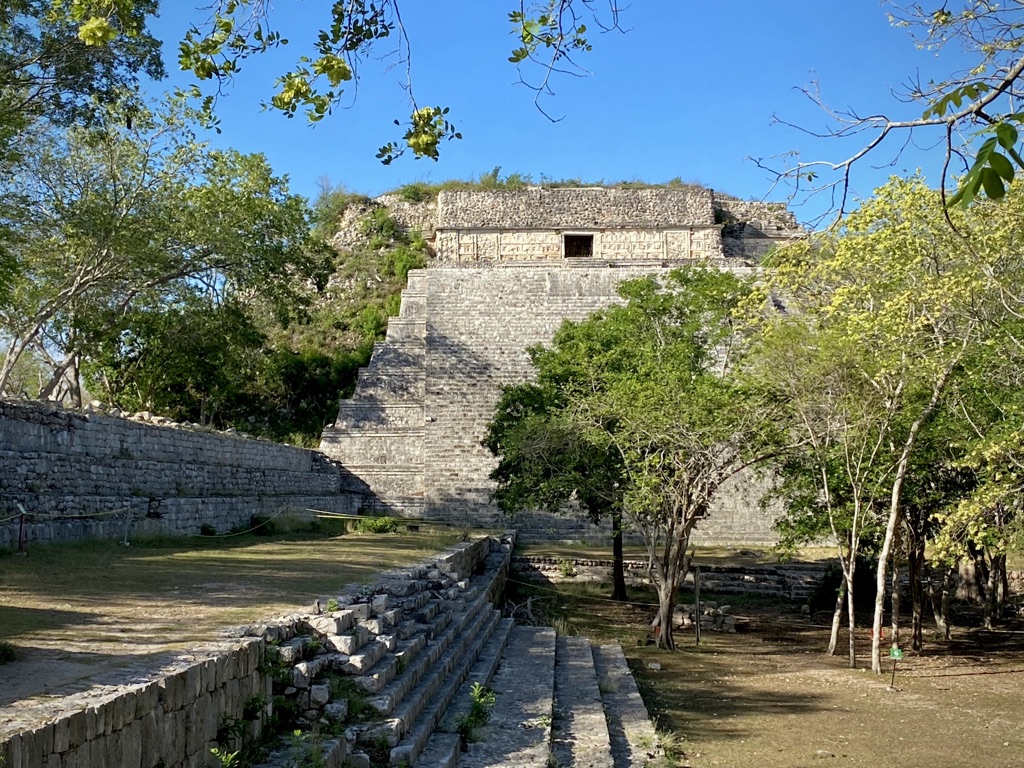
Architectural Style and Innovations
Uxmal is celebrated for its buildings, which are exemplary of the Puuc style, dominant in the region of the western Yucatán Peninsula where the city is located. This architectural style is characterized by smooth low walls that give way to ornate friezes based on representations of typical Maya huts. These friezes incorporate columns symbolizing the reeds used for hut walls and trapezoidal shapes representing thatched roofs. Additionally, the facades often feature entwined snakes and two-headed snakes used as masks for the rain god, Chaac, indicating the Maya’s reverence for this deity. The integration of elements from the Nahua peoples, including the cults of Quetzalcoatl and Tlaloc, into the Puuc tradition is also evident in some of the city’s structures.
The strategic use of the terrain allowed for the construction of impressive structures such as the Pyramid of the Magician, which boasts five levels, and the Governor’s Palace, covering an area of more than 1,200 m2 (12,917 sq ft). These buildings not only demonstrate the Maya’s architectural ingenuity but also their ability to create voluminous and towering structures that dominate the landscape.
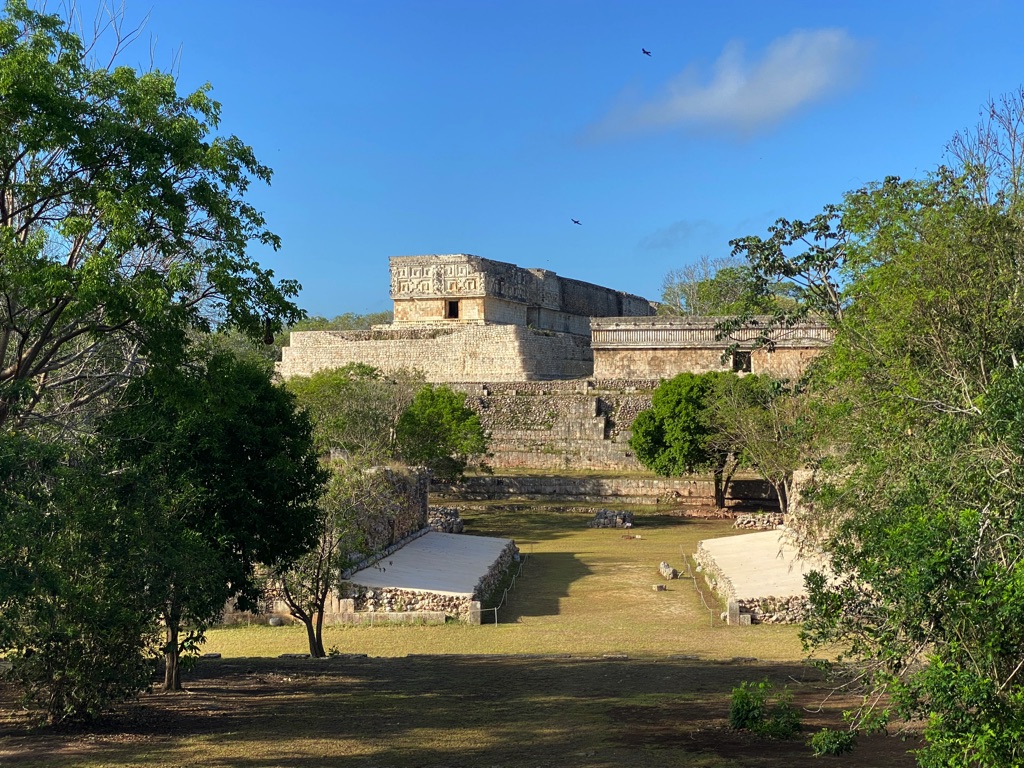
The Governor’s Palace and Astronomical Significance
The Governor’s Palace, notable for its long, low structure atop a massive platform, features the longest façades in Pre-Columbian Mesoamerica. Its orientation and the placement of Venus glyphs in the decoration of the building’s facade suggest a deep astronomical knowledge and the importance of Venus and the rainy season in Maya culture. The presence of numerals and bicephalic serpents further underscores the astronomical and ceremonial significance of this structure.
The Pyramid of the Magician
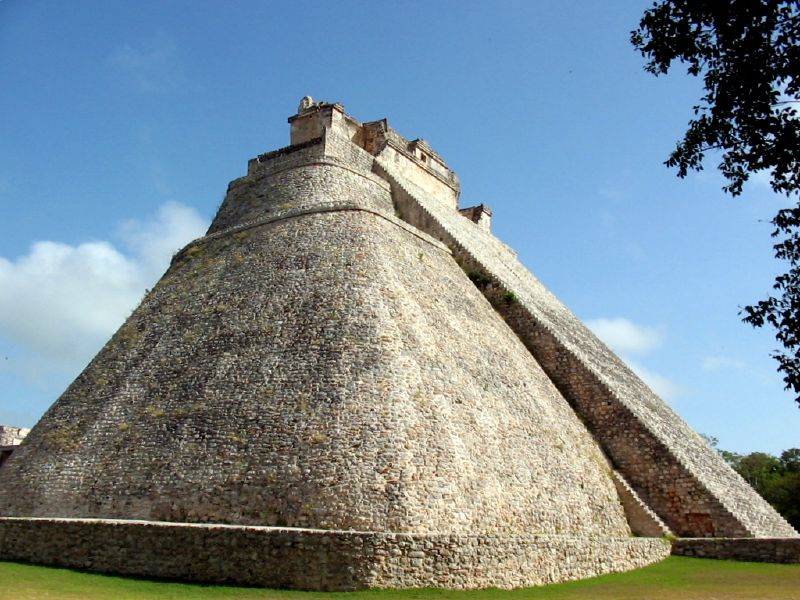
The Adivino, or the Pyramid of the Magician, stands out among Maya structures for its oval or elliptical layers, a departure from the more common rectilinear plan. This pyramid is central to one of the best-known tales of Yucatec Maya folklore, which tells of its construction overnight by a dwarf in a challenge issued by the ruler of Uxmal. This legend, along with the pyramid’s unique architectural features, highlights the cultural richness and mythological depth of the Maya civilization.
The Nunnery Quadrangle
Constructed between 900-1000 AD, the Nunnery Quadrangle is a complex of four palaces surrounding a courtyard, believed to serve as a royal palace with administrative functions. The elaborate carvings and the absence of domestic elements in this complex further emphasize its significance as a center for administrative and ceremonial activities.
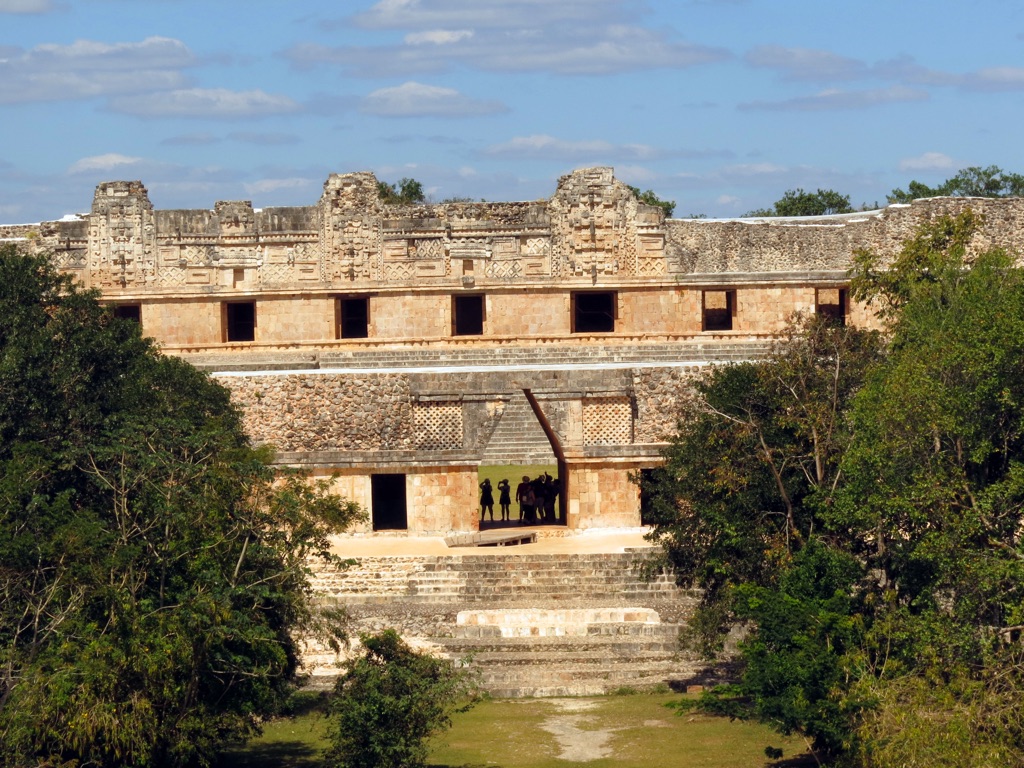
Modern History and Conservation Efforts
The modern history of Uxmal includes mapping by Sylvanus G. Morley in 1909 and various conservation efforts initiated by the Mexican government and international scholars. Notably, a visit by Queen Elizabeth II in 1975 coincided with a sudden torrential downpour during a Maya prayer to Chaac, a moment that underscored the enduring cultural and spiritual legacy of the Maya at Uxmal.
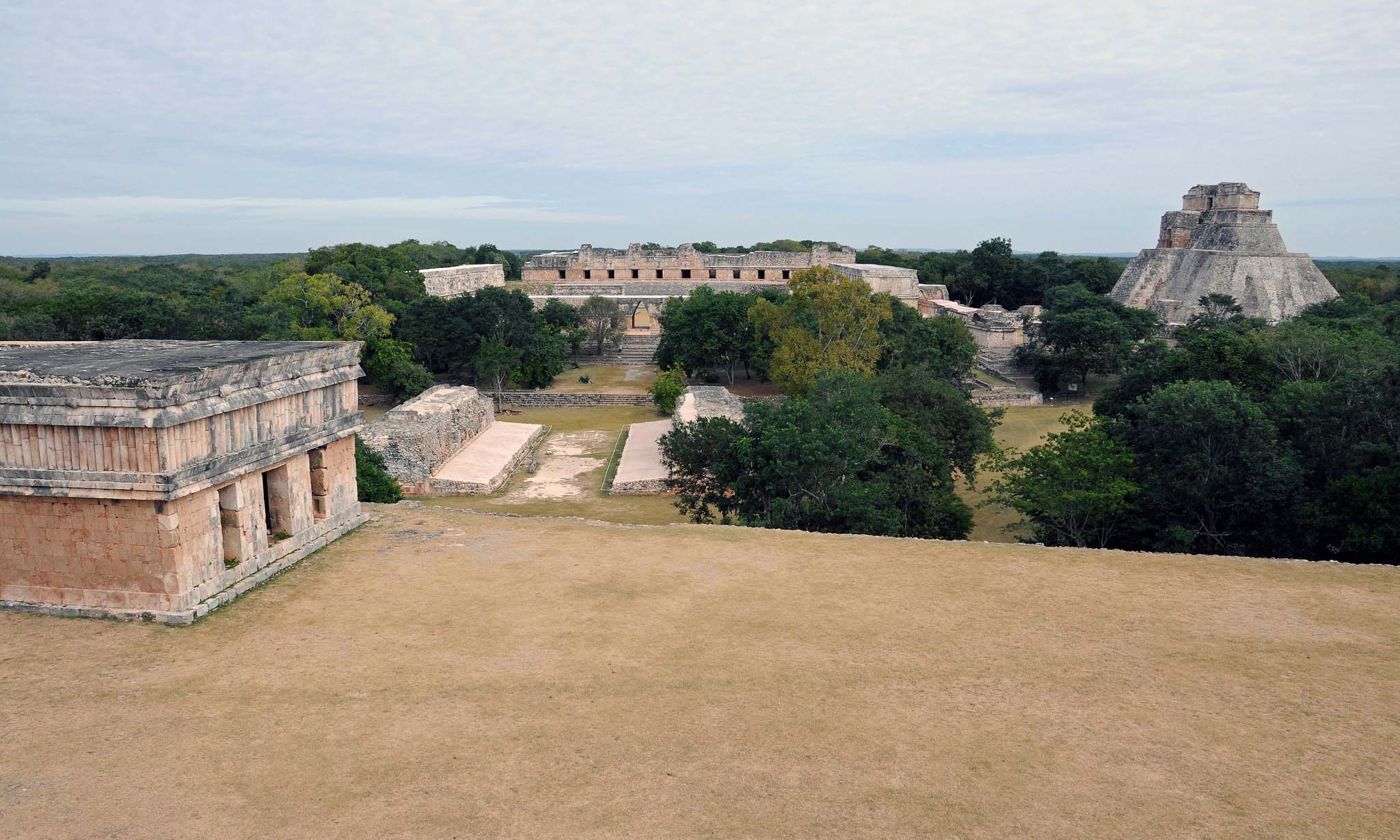
Conclusion
Uxmal stands as a monumental testament to the architectural genius and cultural depth of the Maya civilization. Its buildings, adorned with intricate carvings and steeped in astronomical and mythological significance, continue to captivate scholars, visitors, and enthusiasts of ancient cultures. The ongoing efforts to preserve and study this ancient city ensure that its legacy will endure for generations to come, offering insights into the sophisticated society that once thrived in the Yucatán Peninsula.

